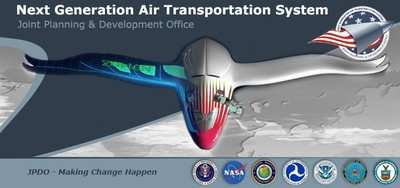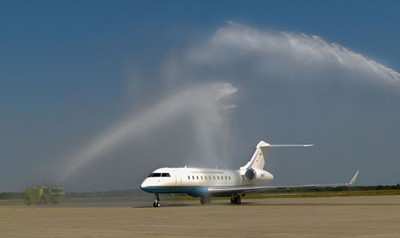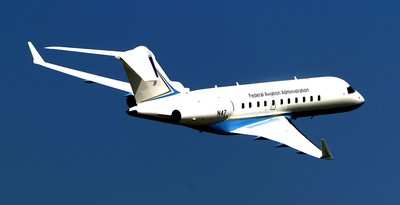 The FAA has released the
latest in a seres of fact sheets designed to address a number of
issues facing the aviation world. This one is a bit more
forward-looking than some of the other releases and it makes for
interesting reading...
The FAA has released the
latest in a seres of fact sheets designed to address a number of
issues facing the aviation world. This one is a bit more
forward-looking than some of the other releases and it makes for
interesting reading...
Airborne Networking: Background
The Federal Aviation Administration predicts that as many as one
billion passengers a year could be flying the nation's airways by
the year 2015. While technology is changing with the blink of an
eye, aviation users and industry partners are demanding that the
national airspace system meet their growing needs and
expectations.
The government is responding to this demand with a vision for
the next generation air transportation system (NGATS). The NGATS
will transform the current system by leveraging new technologies to
meet future needs, by 2025. The NGATS vision is to allow travelers
to choose how, where and when they want to travel while making
their experience as safe, secure and hassle-free as possible.
Network-enabled operations will be a key component of the NGATS,
addressing the enormous amount of information that is generated -
from aircraft position to weather to potential security threats.
Today, there is no core central point where this pertinent data is
managed to provide decision-makers quick access to the information
they need. Network-enabled operations will offer just that -
providing the right information to the right person at the right
time.

New technologies and applications are being developed to support
the NGATS. Airborne networking is one potential technology that
could hold promise toward enabling the advancement of the
NGATS.
What is Airborne Networking?
 Airborne networking, the
new science of bringing network connectivity to aircraft, is a
technology that has the potential to integrate and support a myriad
of activities in both the cockpit and cabin environments.
Airborne networking, the
new science of bringing network connectivity to aircraft, is a
technology that has the potential to integrate and support a myriad
of activities in both the cockpit and cabin environments.
Airborne networking for the cockpit offers many possibilities:
digital air traffic communications that will provide pilots with
better access to digital information sources, air transport
operations and administration, enhanced weather information and
4-dimensional trajectory flight plan management from the air
traffic control system. Also, safety will be enhanced when the
flight crew gains better and quicker access to information sources.
Digital verification techniques can be employed to ensure the
security of the information. Airborne networking also has the
potential to provide crucial security information to Federal Air
Marshals, airline operations and flight crews.
Airborne networking for the cabin offers communications for
passengers that will enable them to access in-flight entertainment,
along with aircraft maintenance information and other non-critical
information sources.
The end-state airborne networking system is envisioned as a
network of ground stations, specially equipped aircraft, satellites
and unmanned aerial systems to carry two-way broadband
communications traffic to aircraft for use by passengers, operators
and air traffic control centers.
Airborne Networking Flight Tests
Critical flight tests to demonstrate the capability of airborne
networking were conducted at the William J. Hughes Technical
Center, in late July, using a system developed by Project
Management Enterprises Inc. (PMEI), of Bethesda, Md. These tests
successfully demonstrated a beyond line-of-sight relay capability,
where direct radio communications were made at very long distances
- distances greater than the curvature of the earth normally allows
for direct radio communications. This capability was achieved by
establishing connectivity between a distant aircraft, an
intermediate-placed aircraft and a ground station.

The Airborne Networking project was the first to conduct flight
tests in the Technical Center's Bombardier Global 5000 Business
Jet. The flying laboratory is equipped with multiple airborne
networking capabilities. Two aircraft, a ground station and
ground-based communication support networks were used in the flight
tests. The project engineers successfully relayed messages and
simulated 4-dimensional flight planning information from one
aircraft to another, and then to the ground station, over an
extended airborne network. In fact, an email message was
successfully sent to 172 people during one of the flight tests,
from 140 miles out over the ocean. This transmission could never
have been accomplished without the use of airborne networking
technology.
This was the first-ever civil aviation (non-military) flight
test of this kind, conducted in the world.
Airborne networking technology offers potential solid support
for the NGATS, which requires implementation of 4-dimensional
trajectory flight planning. The airborne networking technology has
strong potential to enhance future oceanic communications,
resolving communications problems currently faced in the oceanic
environment.
The next airborne networking flight tests will include the
addition of a third aircraft to the experiment, multiple ground
stations and an extended relay capability of the airborne network.
These tests are planned for late fall.

After successful flight tests using three aircraft, more flight
tests will be conducted using four aircraft, further increasing the
complexity of the airborne network and the extended range of
communications capabilities for aircraft flying beyond the line of
sight of the ground station radio.
 Airborne-Flight Training 05.09.24: ERAU at AIAA, LIFT Diamond Buy, Epic A&P
Airborne-Flight Training 05.09.24: ERAU at AIAA, LIFT Diamond Buy, Epic A&P ANN's Daily Aero-Term (05.07.24): Hazardous Weather Information
ANN's Daily Aero-Term (05.07.24): Hazardous Weather Information Aero-News: Quote of the Day (05.07.24)
Aero-News: Quote of the Day (05.07.24) NTSB Final Report: Cessna 150
NTSB Final Report: Cessna 150 Aero-News: Quote of the Day (05.08.24)
Aero-News: Quote of the Day (05.08.24)







